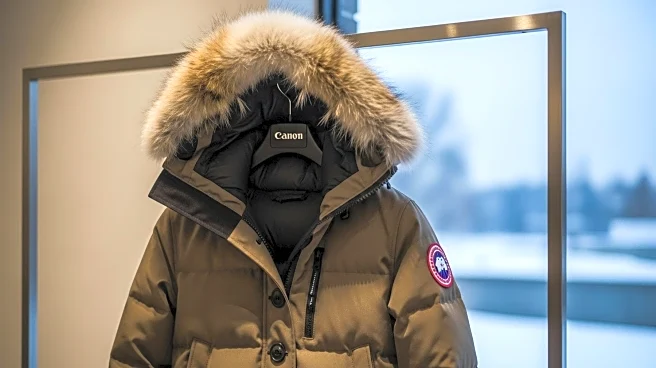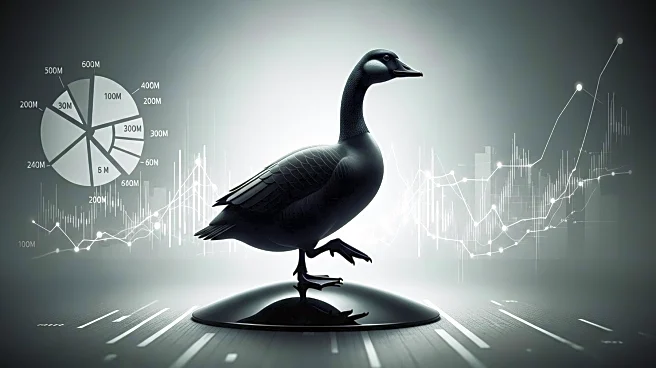What is the story about?
What's Happening?
Canada Goose is strategically positioning itself in the luxury retail sector by focusing on brand authenticity and environmental commitment. The company aims to achieve carbon neutrality by 2025 and has already reduced its greenhouse gas emissions significantly. It is also transitioning to fur-free manufacturing and using sustainable materials like Kind Fleece. The appointment of Haider Ackermann as creative director has introduced high-fashion aesthetics to the brand, while collaborations with sustainable fashion leaders like Reformation have expanded its market reach. These efforts have resulted in a 22.4% sales increase in Q1 2025.
Why It's Important?
Canada Goose's strategy highlights a significant shift in the luxury retail sector towards sustainability and ethical consumerism. By aligning with these values, the company is appealing to a growing segment of consumers who prioritize environmental responsibility. This approach not only differentiates Canada Goose from competitors but also positions it as a leader in the sustainable luxury movement. The company's success in integrating sustainability with high-fashion elements could serve as a model for other luxury brands seeking to balance ethical imperatives with commercial goals.
What's Next?
Canada Goose's continued participation in high-profile industry conferences suggests ongoing engagement with investors and industry leaders. The company's future plans include expanding product categories and maintaining its commitment to sustainability. As consumer demand for transparency and ethical practices grows, Canada Goose's strategies may influence broader industry trends and encourage other brands to adopt similar practices.
Beyond the Headlines
The ethical and environmental commitments of Canada Goose could lead to long-term shifts in consumer expectations and industry standards. As more brands follow suit, the luxury sector may see a transformation towards more sustainable practices, potentially influencing global supply chains and manufacturing processes.
AI Generated Content
Do you find this article useful?















